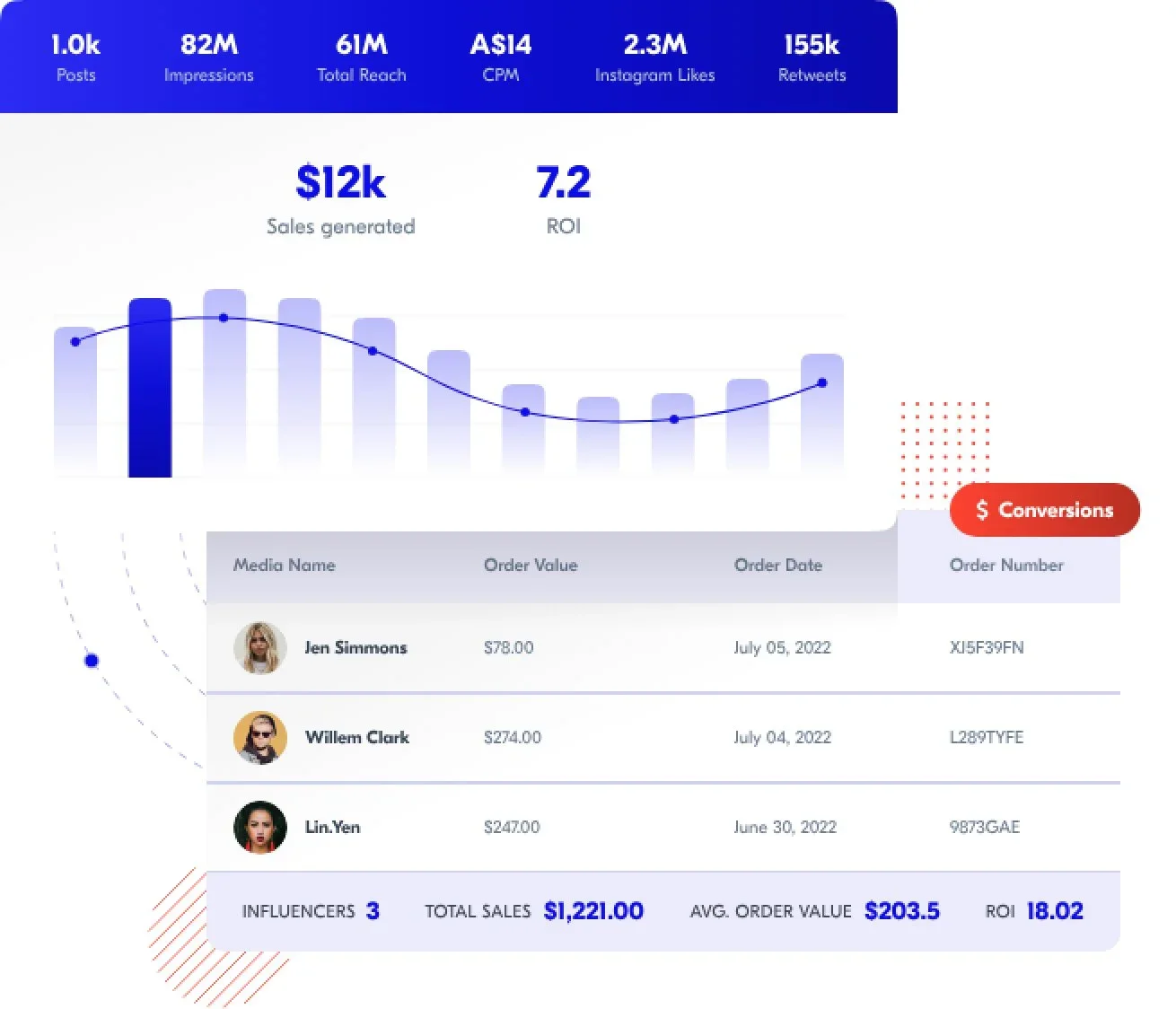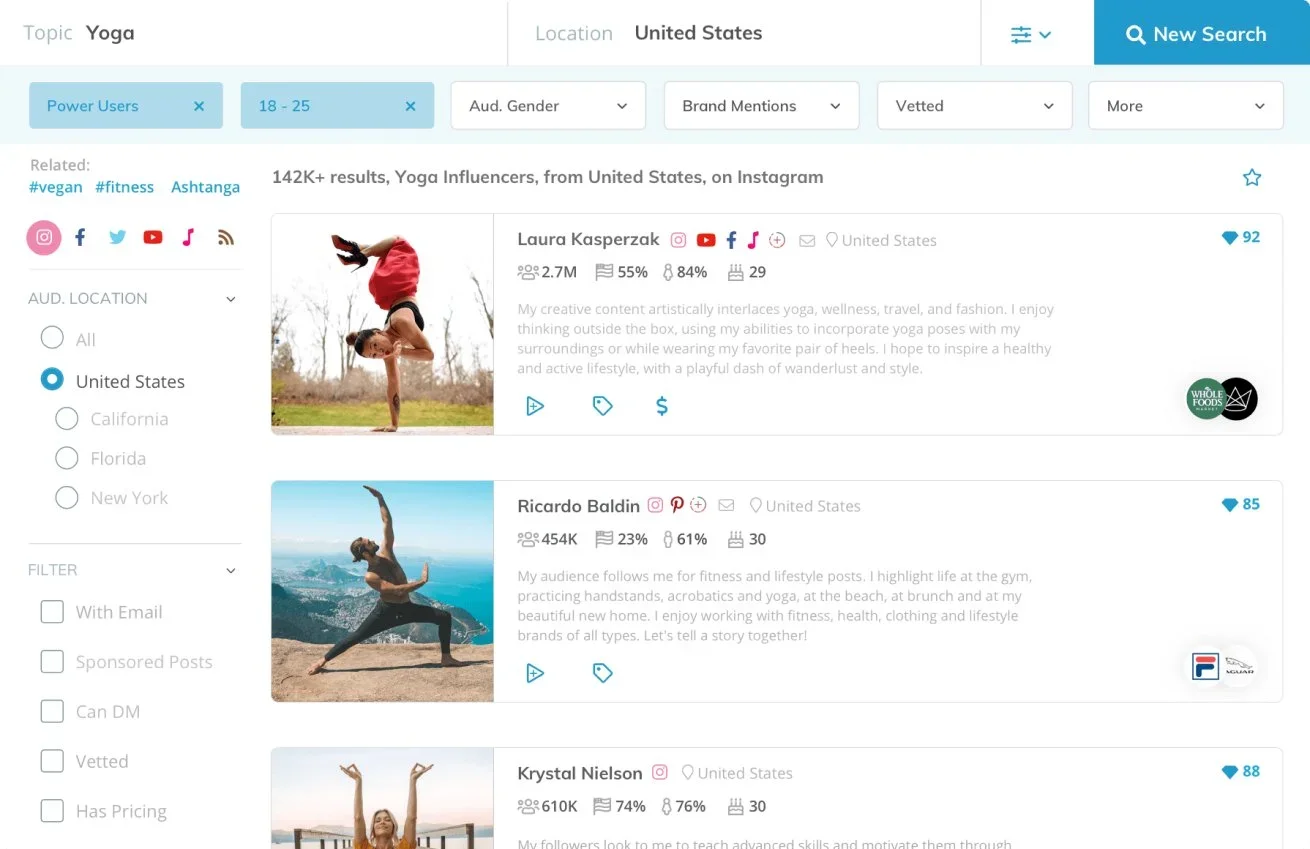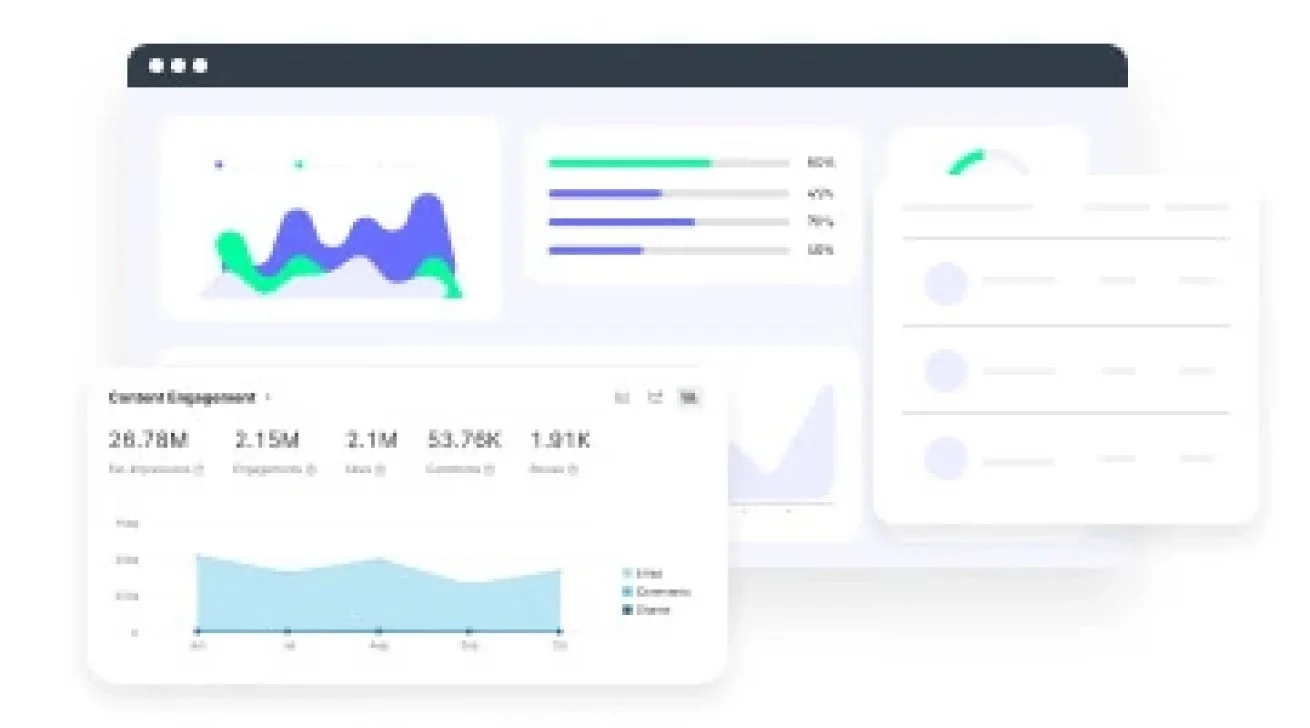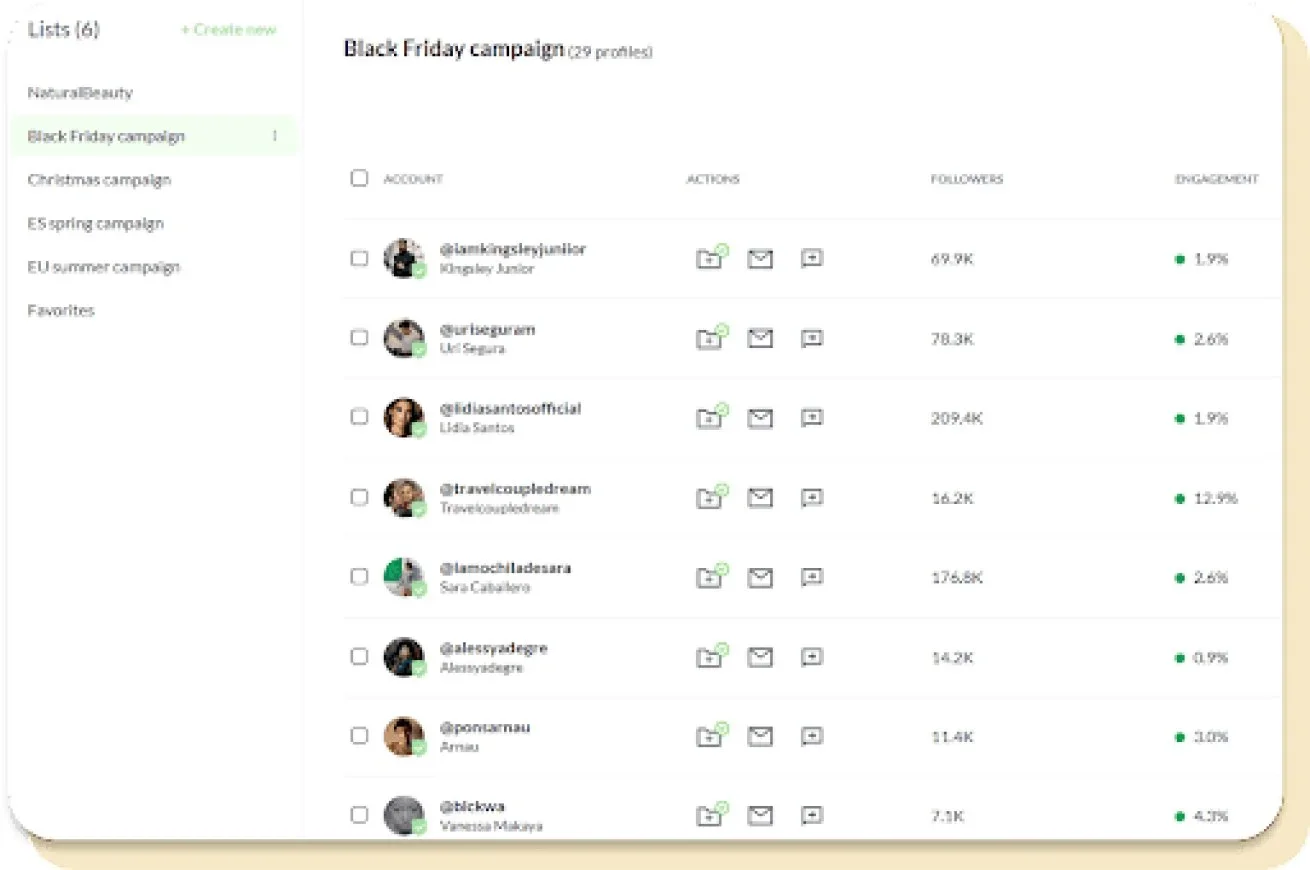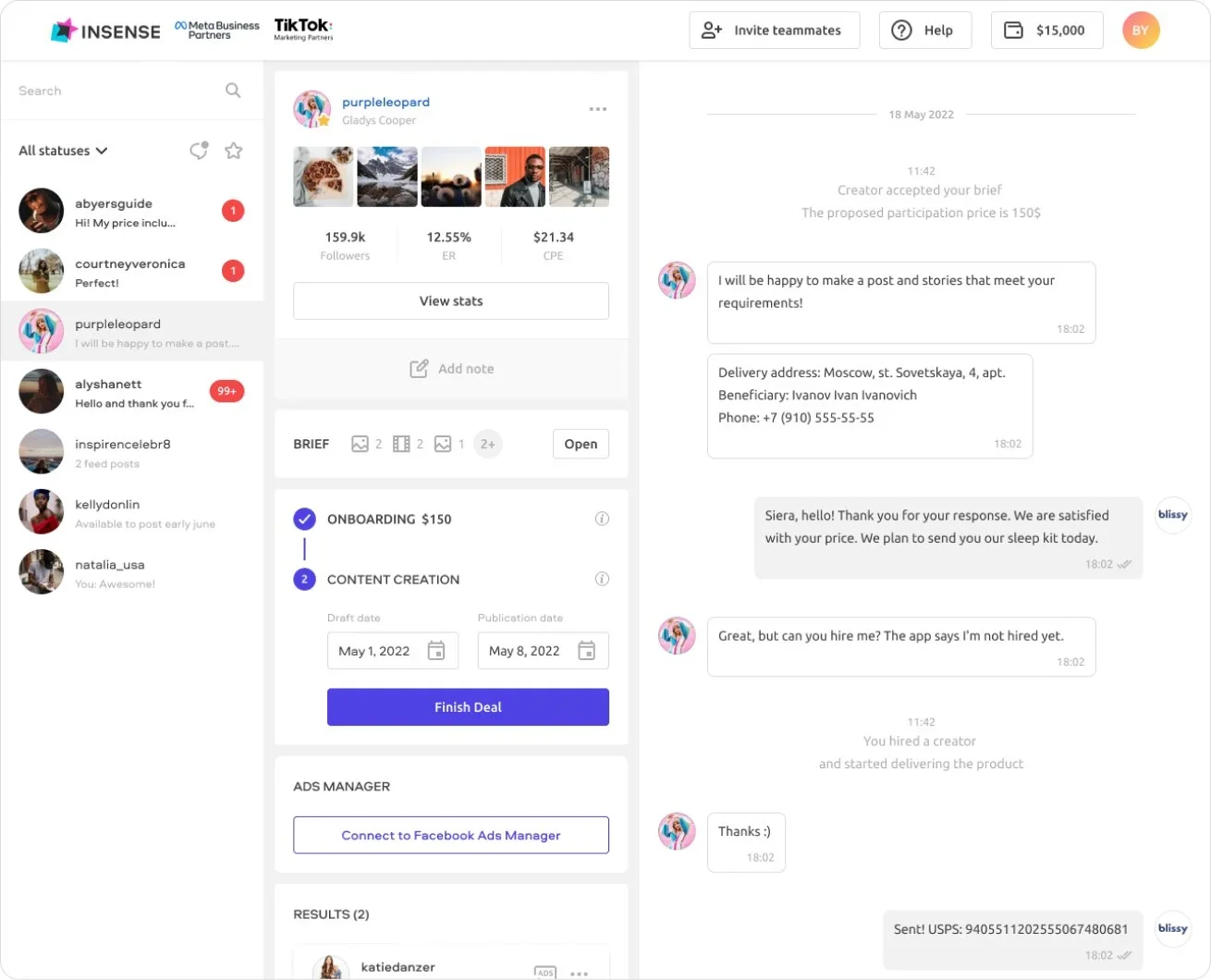The Top 5 Platforms to Find Nano Influencers
In today's digital marketing landscape, leveraging the power of nano influencers can be a game-changer for brands seeking authentic engagement and a more personal connection with their audience. Their reach allows for Nano influencers, who typically have 1,000 to 10,000 followers, offer high engagement rates and a closer relationship with their audience compared to larger influencers. Here are the top 5 platforms to find nano influencers and boost your content strategy.
1. Upfluence
Upfluence is a comprehensive influencer marketing platform renowned for its extensive filtering search features and in-depth influencer analytics. This platform is ideal for both B2B and B2C brands of all sizes, offering tools that help you discover relevant influencers, analyze their portfolios, and manage influencer relationships effectively. Upfluence integrates seamlessly with various e-commerce platforms and CRMs, making it a versatile choice for brands looking to harness the power of nano influencers.
Upfluence Pros:
Comprehensive Analytics: Offers in-depth influencer analytics, making it easier to assess potential nano influencers.
E-commerce Integration: Seamlessly integrates with various e-commerce platforms and CRMs, allowing for streamlined campaign management.
Customizable Solutions: Tailored pricing and feature sets make it adaptable to different business needs.
Upfluence Cons:
Potentially High Cost: Custom pricing might lead to higher costs for small businesses, especially those looking for more basic features.
Complexity: The platform's advanced features might be overwhelming for smaller teams or those new to influencer marketing
2. Klear
Klear offers a database of over 30 million influencer profiles, making it one of the largest platforms for influencer marketing. It provides detailed analytics on influencer stats, audience demographics, and campaign performance. Klear’s campaign management tools are perfect for entry to mid-level businesses and enterprises aiming to maximize their influencer ROI. With features like influencer relationship management and content approval tools, Klear simplifies the process of managing nano influencer campaigns.
Klear Pros:
Extensive Database: Provides access to over 30 million influencer profiles, which is one of the largest databases available.
Ease of Use: Klear is user-friendly with a focus on simplicity in campaign management and metrics tracking.
Suitable for Smaller Teams: Offers a startup plan, making it accessible for smaller companies and teams.
Klear Cons:
Search Precision Issues: Some users have noted that the search functionality and pre-defined categories could be more accurate, which may hinder finding the perfect nano influencer.
Limited Scalability: While great for small to mid-sized campaigns, it may not be as robust for large-scale or highly specialized campaigns
3. GRIN
GRIN is a powerful tool for eCommerce and fast-growing brands, offering a suite of tools designed for influencer marketing, affiliate marketing, and customer advocacy. GRIN’s platform includes an engagement rate calculator, influencer comparison tools, and advanced algorithms to identify fake influencers, ensuring you collaborate with genuine nano influencers who can effectively promote your brand. The platform’s user-friendly interface and robust campaign management features make it an excellent choice for brands serious about influencer marketing.
GRIN Pros:
Robust Feature Set: Includes advanced tools for engagement rate calculation, influencer comparison, and fraud detection, making it highly reliable for ensuring genuine influencer partnerships.
Targeted for eCommerce: Especially strong in eCommerce, making it ideal for brands looking to drive online sales through influencer marketing.
High Customization: Offers in-depth customization for campaign management, making it suitable for complex campaigns.
GRIN Cons:
Higher Cost: Positioned as a premium solution, it may be prohibitively expensive for smaller businesses or startups.
Complex Setup: The platform's wide range of features might require a steeper learning curve and more time investment to master
4. Heepsy
Heepsy is known for its user-friendly interface and advanced search filters that allow brands to find nano influencers based on niche, location, engagement rate, and follower count. Heepsy provides detailed analytics on influencers, offering insights into their audience demographics, engagement rates, and content effectiveness. This makes it easier for brands to identify and collaborate with the most suitable nano influencers for their campaigns. Heepsy’s efficient influencer vetting process ensures high-quality collaborations and targeted marketing efforts.
Heepsy Pros:
Affordability: More accessible pricing makes it a good option for small to medium-sized businesses or those just starting with influencer marketing.
User-Friendly Interface: Easy to navigate, even for beginners, with advanced search filters that help find the right nano influencers quickly.
Efficient Vetting: Known for its thorough vetting process, ensuring you collaborate with quality influencers.
Heepsy Cons:
Limited Advanced Features: While it offers the basics, it may lack the advanced tools and analytics available on higher-end platforms like GRIN or Upfluence.
Search Accuracy: Users have noted that the search functionality could be improved, especially when applying multiple filters
5. Insense
Insense stands out for its centralized dashboard and diverse range of influencers, from nano to well-known creators. The platform offers features like content amplification, automated recruiting, influencer relationship management, and campaign management tools. Insense’s commitment to customer service enhances your experience, making it an ideal choice for medium and large-sized brands looking to leverage nano influencers for impactful storytelling and audience engagement.
Insense Pros:
Content Amplification: Offers strong tools for content amplification and automated recruiting, making it ideal for brands focusing on content-driven campaigns.
Scalable Solutions: With pricing tiers ranging from UGC to advanced packages, it caters to both small and large businesses.
Comprehensive Dashboard: The centralized dashboard simplifies the management of all aspects of influencer campaigns.
Insense Cons:
Higher Tier Costs: The more advanced features come with higher costs, which might be less feasible for smaller businesses or those with tight budgets.
Focus on Larger Campaigns: While it supports a range of influencers, its features are often better suited to medium and large-sized brands
Choosing the right platform to find and collaborate with nano influencers can significantly impact your brand's marketing success. Platforms like Upfluence, Klear, GRIN, Heepsy, and Insense offer a range of tools and features that streamline the process of discovering, analyzing, and managing nano influencers. By leveraging these platforms, brands can create authentic connections with their audience and drive meaningful engagement.

